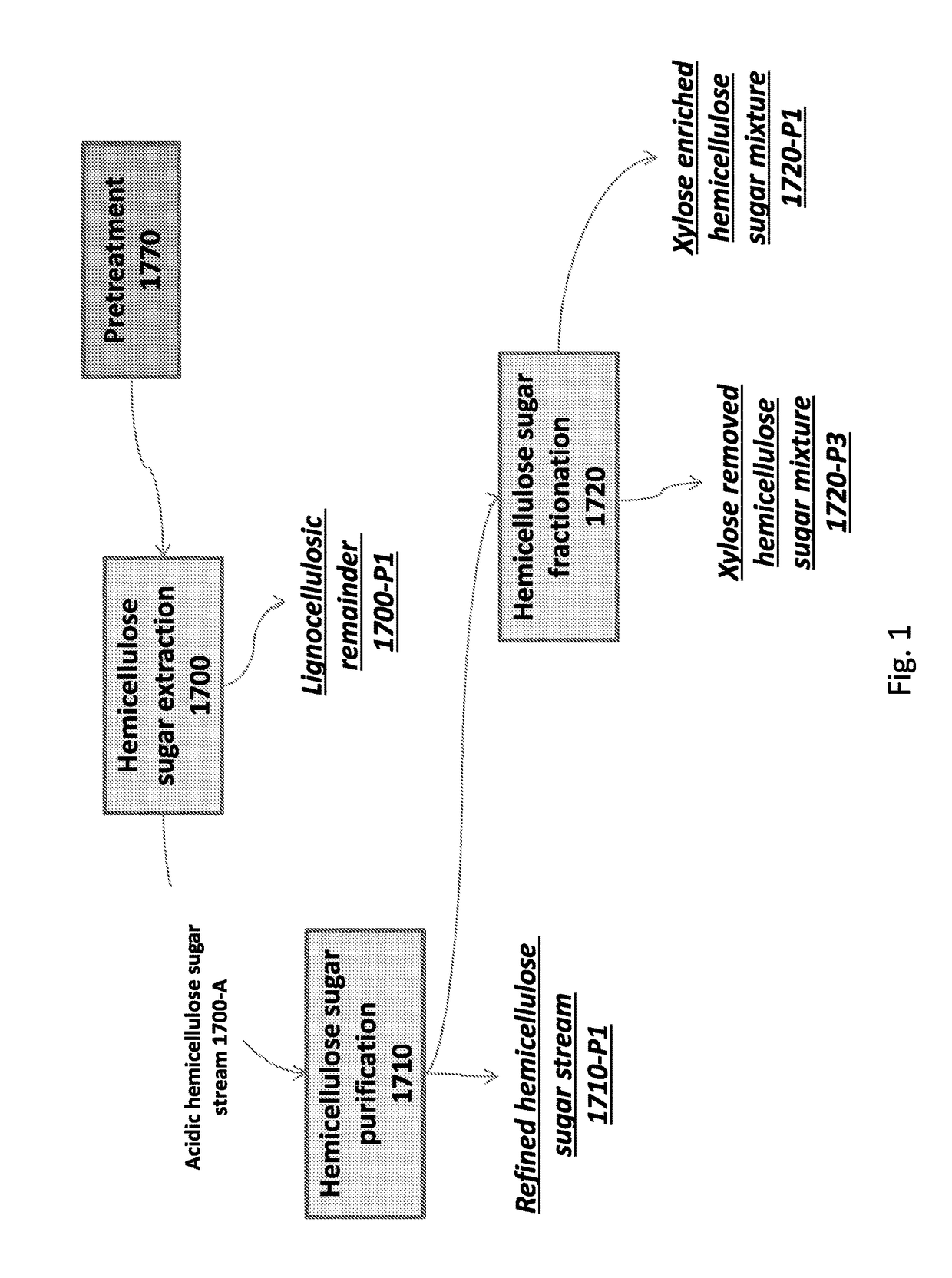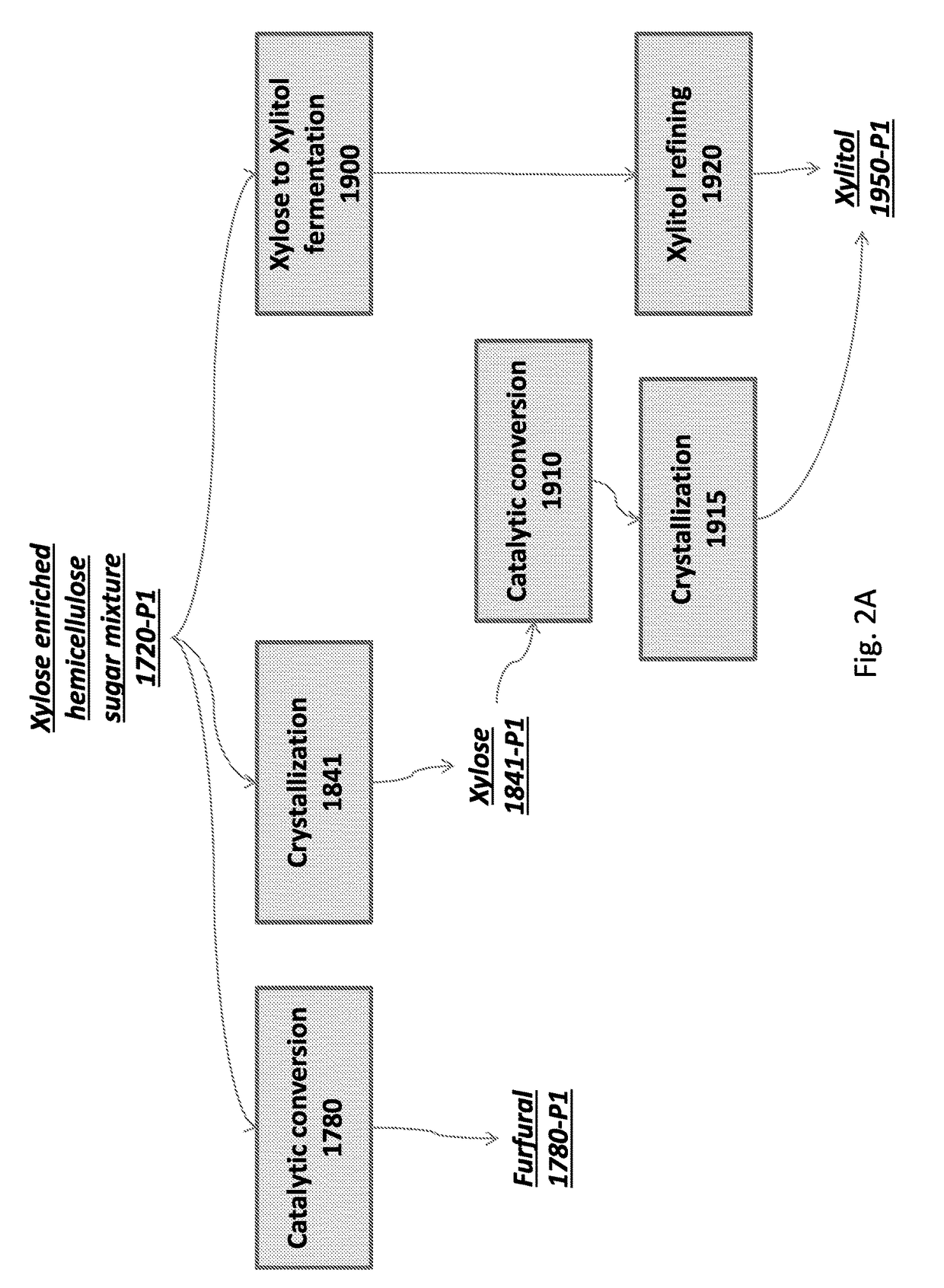Methods for extracting and converting hemicellulose sugars
a technology of hemicellulose and sugar, which is applied in the field of methods for extracting and converting hemicellulose sugar, can solve the problems of difficult and costly separation from the desired xylitol product, requiring specialized and expensive equipment for the high pressure and temperature requirements of the reaction, and achieving cost-effective production. , the effect of efficient and cost-effective production
- Summary
- Abstract
- Description
- Claims
- Application Information
AI Technical Summary
Benefits of technology
Problems solved by technology
Method used
Image
Examples
example 1
of Ash of Louisiana Bagasse Feedstock Before and after Soil and Ash Removal
[0116]The ash fraction of a sample of bagasse taken from a pile at a sugar mill in Louisiana was evaluated by ashing of samples in a microwave furnace (3.1. CEM Phoenix™ Microwave Muffle Furnace). The bagasse sample was found to contain 13.4% ash.
TABLE 1AAsh results after different treatments to remove soil and ashSample% AshLouisiana Sample R113.12Louisiana Sample A17.81Louisiana Sample R213.38Sample R1 washed with water12.78Sample A washed with water17.16Sample R2, 1 shear treatment, 1 pressure wash6.67Sample A, 2 shear treatments, 2 pressure wash2.52Sample R2, 6 shear treatments, 6 pressure wash2.68Sample R2, 8 shear treatments, 8 pressure wash2.26
[0117]The results summarized in Table 1A demonstrate the high ash present in Louisiana bagasse obtained from different sugar mills and different sampling times. The results also show that to achieve effective removal of soil and ash it is essential to apply sever...
example 2
ization of Different Bagasse Samples
[0120]In practical operational conditions, an industrial process should be capable of utilizing bagasse of varying storage history, as bagasse may be stored in piles by the sugar mill for over 1, 3, 5, or even over 10, 12, or 14 years. Moreover, sugarcane harvesting season is about 3 months, with sugar production being a seasonal process, while a biorefinery should operate year round. It is further advantageous that excess leaves and field debris can be handled in the same process to harvest the xylose portion within and to eliminate a bottleneck of debris handling for the farmer and / or the sugar mill. Bagasse samples that have been stored more than a year, new bagasse and field debris were characterized. “New Bagasse” samples were from piles accumulated for up to 4 years ago, “Old Bagasse” samples were from piles accumulated 5-15 years ago, and “Leaves” and other field debris were de-soiled / de-ashed according to Example 1. The washed samples were...
example 3
of Louisiana Bagasse
[0121]Bagasse was received from a sugar mill in lumps. The biomass was shredded using a wood chipper and screened through a series of sieves. Typical particle sizes of the crushed / shredded bagasse are presented in Table 3.
TABLE 3Particle size of shredded bagasseMeshMicron% On1216806.2208413.63059516.54042020.46025021.68017710.21001495.91201252.4200746.5Thru747.3100.6
PUM
 Login to View More
Login to View More Abstract
Description
Claims
Application Information
 Login to View More
Login to View More - R&D
- Intellectual Property
- Life Sciences
- Materials
- Tech Scout
- Unparalleled Data Quality
- Higher Quality Content
- 60% Fewer Hallucinations
Browse by: Latest US Patents, China's latest patents, Technical Efficacy Thesaurus, Application Domain, Technology Topic, Popular Technical Reports.
© 2025 PatSnap. All rights reserved.Legal|Privacy policy|Modern Slavery Act Transparency Statement|Sitemap|About US| Contact US: help@patsnap.com



